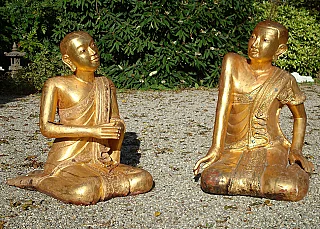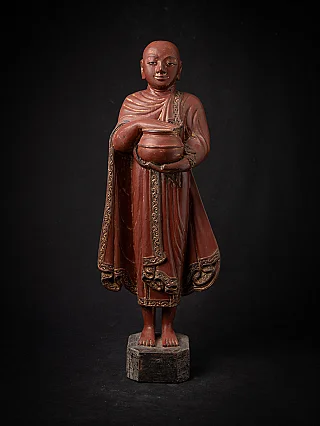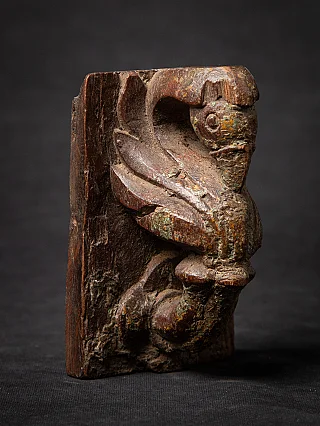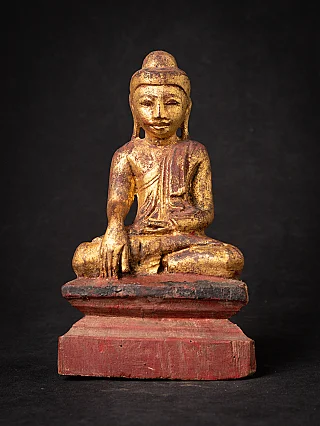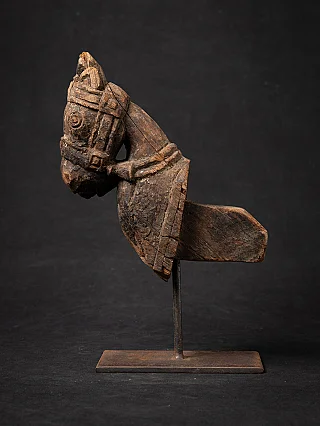The art of wood carving

Wooden Buddha statues hold a special place in Buddhist art. Carved from nature's bounty, they radiate a warmth and serenity that resonates with devotees and art enthusiasts alike. Their creation is an age-old tradition, meticulously passed down through generations of skilled artisans.
A History Steeped in Tradition
The origins of wooden Buddha statues can be traced back to early Buddhist art, which flourished alongside bronze and stone sculptures. Evidence suggests they were created in India as early as the 2nd century BCE. However, due to the organic nature of wood, many of these early works have yet to survive the test of time.
The spread of Buddhism along the Silk Road led to the establishment of renowned woodworking schools in Southeast Asia, particularly Thailand, Myanmar, and Nepal. Each region developed its distinct style, influenced by local materials, techniques, and Buddhist interpretations.
- Thailand: Thai wooden Buddhas are known for their elegance and elongated features. Crafted from Teakwood, they are often adorned with gold leaf or lacquer, adding to their grandeur.
- Myanmar: Burmese Buddhas showcase a more robust style, with broad shoulders and pronounced robes. They are typically made from hardwoods like padauk and sindora, known for their deep reddish hues.
- Nepal: Nepalese wooden Buddhas exhibit a robust Tibetan influence, with intricate details and vibrant colors. Carvers often use shal (Shorea robusta) wood, which is known for its durability and fine grain.
Symbolic Significance

Wooden Buddha statues are not mere decorative pieces but powerful symbols in Buddhism. Their form, posture, and hand gestures, known as mudras, all hold specific meanings.
- Posture: The seated posture, with legs folded in meditation (padmasana), signifies enlightenment and inner peace. Standing Buddhas represent the act of teaching or offering protection.
- Mudras: The most common mudras include the Bhumisparsha Mudra (touching the earth), symbolizing the Buddha calling upon the Earth Goddess to witness his enlightenment, and the Dharmachakra Mudra (turning the wheel of dharma), representing the teaching of the Buddha's path.
The material itself, wood, also carries symbolic weight. It represents growth, transformation, and connection to nature in many cultures. The natural imperfections and variations in the grain are seen as adding to the character and uniqueness of each statue.
The Art of Creation

Creating a wooden Buddha statue is a meticulous process that demands dedication, skill, and deep respect for the tradition. Here's a glimpse into the different stages involved:
- Wood Selection: The choice of wood is crucial. Artisans consider factors like durability, workability, and the symbolic significance associated with different types of wood. Teakwood is a popular choice due to its strength, beauty, and resistance to decay.
- Carving: The statue is painstakingly carved by hand, using a combination of chisels, hammers, and other specialized tools. The carver's skill and knowledge of Buddhist iconography are essential in capturing the essence of the Buddha.
- Sanding and Finishing: The statue is meticulously sanded once the carving is complete to achieve a smooth finish. Depending on the tradition, it may be left natural, painted with vibrant colors, or adorned with gold leaf.
The Art of Wood Carving further emphasizes the skill and dedication required. Many traditional woodcarvers start to learn their profession at a very young age. They hone their craft by working around temples and pagodas and in their fathers' workshops, ensuring their knowledge. They also engage in the exciting practice of buying damaged statues in Burma and repairing them with professional carpenters. This dedication to preserving these artistic and spiritual treasures speaks volumes about the respect these statues hold.
The entire process of creating a wooden Buddha statue can take days, weeks, or even months, depending on its size and complexity. The dedication and focus required from the artisans imbue each statue with a sense of reverence and spiritual significance.
The Role of Wooden Buddha Statues
Wooden Buddha statues serve several purposes within Buddhism:
- Objects of Devotion: They act as focal points for meditation and prayer, allowing devotees to connect with the Buddha's teachings.
- Preserving Teachings: They visually represent Buddhist stories and principles, passing down knowledge through generations.
- Promoting Meditation: Their serene form and posture inspire practitioners to cultivate inner peace and mindfulness.
In recent times, wooden Buddha statues have transcended their religious significance. They are appreciated for their artistic merit and find a place in homes and gardens as symbols of peace and tranquility.
Caring for Wooden Buddha Statues
While wooden Buddha statues are built to last, proper care ensures their beauty endures for generations. Here are some tips, incorporating insights from the provided excerpt:
- Dusting: Regularly remove dust with a soft, dry cloth to prevent build-up.
- Sunlight: Avoid direct sunlight, as it can cause fading and cracking.
- Humidity: Maintain a moderate humidity level to prevent the wood from warping.
- Cleaning: Avoid harsh chemicals or abrasive cleaners. Use a damp cloth for occasional cleaning.
Professional Restoration
Professional woodworkers contribute to restoring damaged wooden Buddha statues, particularly in addressing structural repairs. This highlights the importance of seeking expert help for significant damage or restoration needs. While minor cleaning can be done at home, professional conservators possess the skills and knowledge to address cracks, warping, or insect damage, ensuring the statue's longevity and preserving its historical and cultural value.
By following these tips and seeking professional help when necessary, you can ensure your wooden Buddha statue continues to be a source of inspiration and beauty for generations.
Conclusion
Wooden Buddha statues are more than just decorative objects; they are testaments to artistic skill, cultural heritage, and the enduring wisdom of Buddhism. Their creation is a meticulous process steeped in tradition, and the resulting statues serve as powerful symbols of peace, enlightenment, and connection. Whether in a place of worship or a private home, these statues are a powerful reminder of the path to inner peace.
Share this page























